The rivers in France would cover 430,000 kilometres if they were laid end to end. In certain locations, France’s vast river system serves as a source of water power (French Alps, Jura, Massif Central, Vosges).
For centuries before the coming of railways, rivers also offered irrigation and cheap transportation.
To appreciate the rivers of France, it is helpful to first grasp the country’s geography.
France has mountains along its eastern border with the Vosges, Jura, and Alpes, as well as mountains in south-central France and along its southern border with Spain (the Pyrenees).
The major rivers are shaped by this geography and flow from the mountains to the sea, mainly north and west towards the Atlantic Ocean and the English Channel, except for the Rhone, which flows south to the Mediterranean.
Things you'll find in this article
Longest Rivers In France
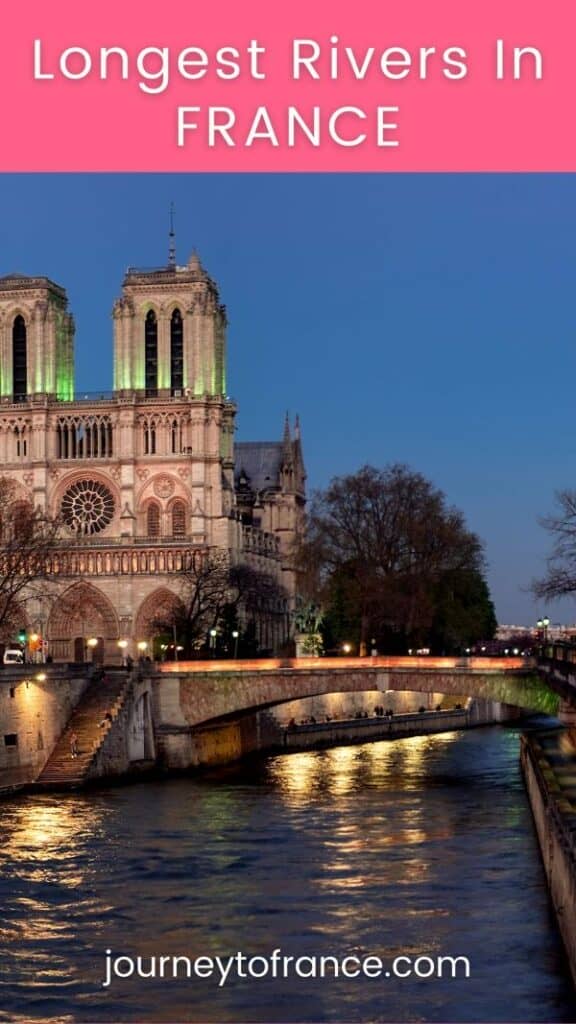
This guide will concentrate on France’s longest rivers, which flow through cities, towns, and regions. These are the ones you’re most likely to come across and recognize as you travel across the country. Here are the longest rivers in France, from the Seine in the northwest to the Rhone in the southeast.
1. The Loire River
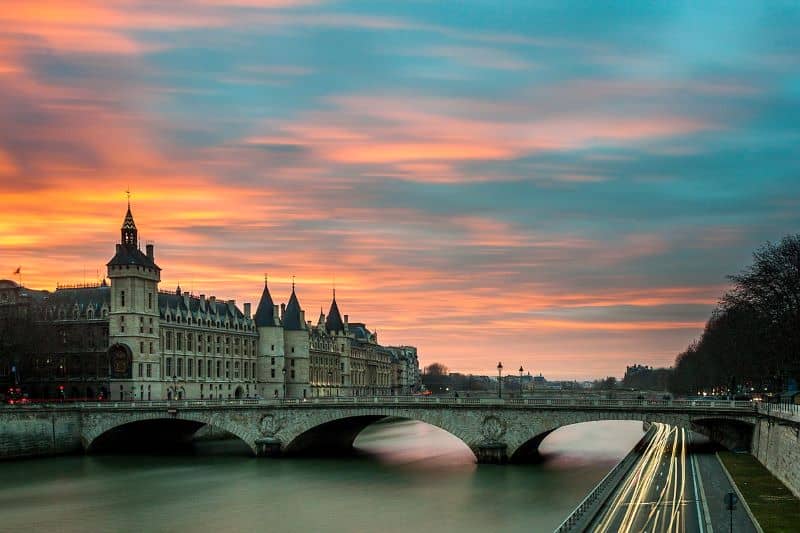
At 630 miles, the Loire is France’s longest river (1,013 km). It rises in the Ardèche department’s Massif Central, high in the Cevennes mountain ranges. The spring is located 1,350 meters (4,430 feet) above sea level, at the base of the desolate Gerbier de Jonc. The Loire travels through much of France before draining into the Atlantic Ocean.
The river meanders northwest, then through Nevers and up into the eastern Loire Valley. It then travels past some of the most well-known Loire Valley wine areas, including Pouilly and Sancerre, on its way to Orléans.
The Loire flows southwest from Orléans through its most famous section, the magnificent valley lined with châteaux. Its treasures include the picturesque hamlet and château of Blois, the huge Chambord, and the quaint Amboise, where Leonardo da Vinci spent his final years at Clos-Lucé.
The now-grand river flows through Tours, the centre of the region known as the Garden of France. The châteaux of Chenonceau, the Azay-le-Rideau, the spectacular gardens of Villandry and the monastery of Fontevraud, may be found here.
The river then runs west to Angers, a charming town where the Tapestry of the Apocalypse is still one of France’s most underappreciated sights.
The Loire River flows through Nantes, previously Brittany‘s capital, and ends in St. Nazaire in the Atlantic.
2. The Seine River
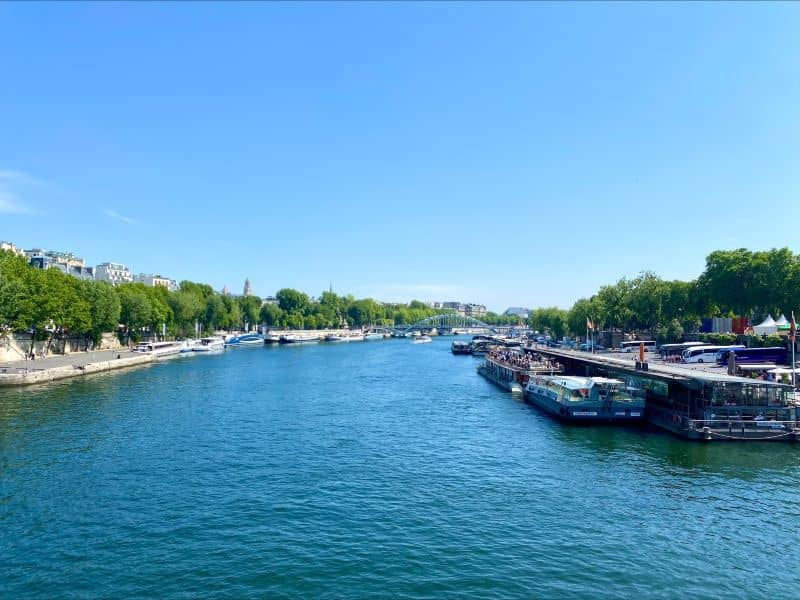
The Seine is a river that goes through Paris on its way from the northwest to the southeast across northern France. France’s second-longest river, the Seine runs through Paris and is, therefore, the most well-known river in France.
Located 30 kilometres northwest of Dijon in the Côte d’Or region of France, the Seine runs northwest to the lovely town of Troyes.
From there, the river meanders through Fontainebleau Forest, Melun, Corbeil, and Paris. This is where the Seine divides Paris into the Right and left banks.
Then the river continues through Nantes and Rouen, where it was a prominent part of the 19th-century Impressionist movement.
In this area, the Seine was painted in all seasons and all lighting conditions. The Seine then empties into the English Channel between Honfleur, a picture-perfect fishing village, and Le Havre, a bustling port city.
In addition to these, the Seine has other smaller tributaries, such as Aube, Eure, Marne, Oise and Yonne rivers.
3. The Garonne
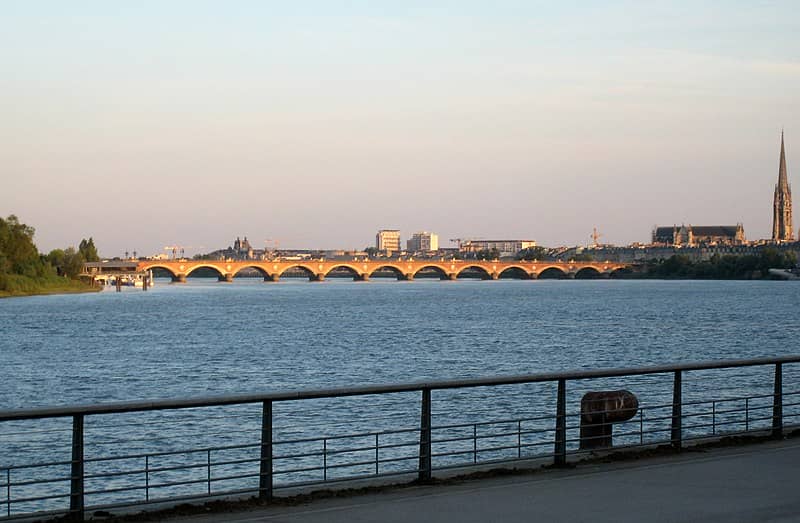
Formed from glacial streams high above Aragon, the Garonne River is 357 miles (575 kilometres) long.
Flowing east-west across southern France, the Garonne eventually meets the Atlantic at Bordeaux, where it serves as the primary outflow for streams and rivers in the Pyrenees
As France’s fourth longest river, the Garonne flows through Saint-Gaudens and past one of the country’s greatest alluvial plains before spilling into the Mediterranean Sea. Just after the Ariège river joins it, the Garonne goes through Toulouse, famous for the great artist Toulouse-Lautrec.
From Toulouse, it ends in Marseille, where it is known as “Canal du Midi.” Afterwards, it travels northwest towards Bordeaux, where it merges with the Lot River just beyond Aiguillion.
Some of France’s nicest beaches can be found north of Bordeaux in the vast Gironde Estuary, formed by the Dordogne and Garonne rivers.
Some of Garonne’s tributaries are the Tarn and the Lot rivers.
4. The Rhône River
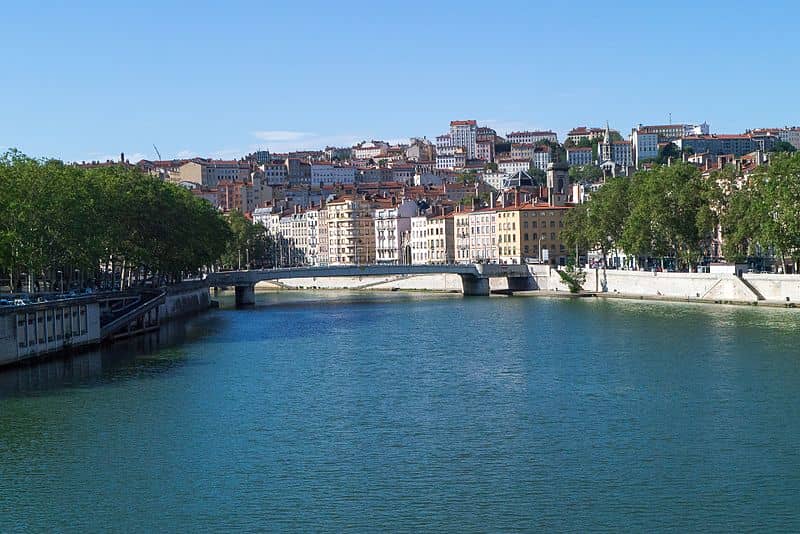
The Rhone River runs almost the entire length of southeastern France from north to south. The Rhône spans 504 miles (813 kilometres) from its headwaters in Switzerland, with 338 miles (545 kilometres) of that distance in France.
The Rhine makes its first incursion into France in the Jura Mountains in the south of France. Lyon is the river’s first major city on its path to join the Sâone (298 miles or 480 km long).
The Rhône then flows south through the Rhône Valley. The Great and Petit Rhônes meet in Port-St-Louis-du-Rhône and Saintes-Maries-de-la-Mer.
The Rhone, as part of a huge network of canals, connects Marseille and Sète, as well as smaller trading ports. It’s an extraordinarily stunning place, with lavender fields, olive trees, and vineyards illuminating the white limestone hills. The most famous of the valley’s vineyards is Chateauneuf-du-Pape near Avignon.
The Saone, Isere, Durance, and Ain rivers are Rhone River tributaries.
5. The Dordogne
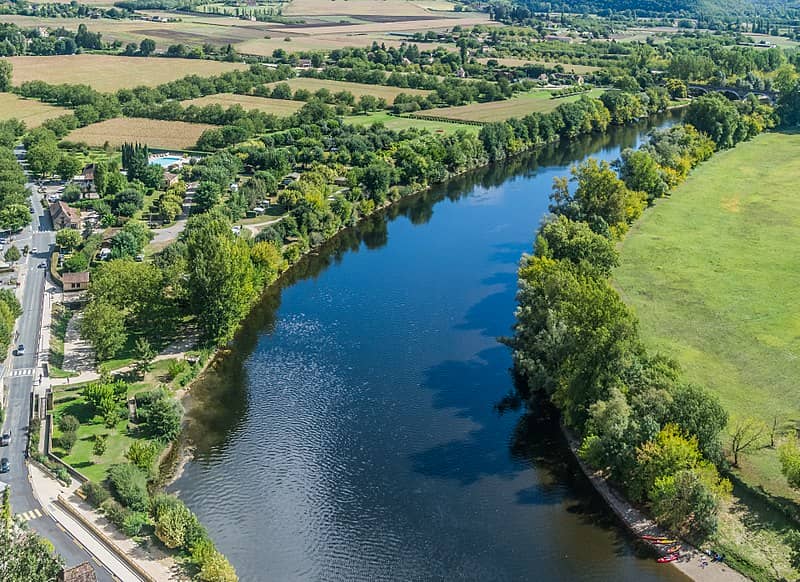
The Dordogne River runs from west to east across southern France, then drains into the Atlantic via Bordeaux.
The 300-mile-long Dordogne River ranks fifth among France’s rivers in terms of length (483 kilometres). Before arriving at Argentat, the Dordogne winds through a succession of deep gorges.
As the river winds across the countryside, it passes through picturesque towns like Beaulieu-sur-Dordogne, dotted with majestic castles. It passes through La Roque-Gageac and the Gouffre du Padirac sinkhole.
For a breathtaking perspective of the river, head to the Marqueyssac gardens. After passing through Bergerac and St. Emilion, the Gironde empties into Europe’s largest estuary at Bec d’Ambès. The Dordogne and the Garonne then meet in the Atlantic Ocean at the Bay of Biscay.
The Dordogne River has many smaller tributaries, such as the Vézère. Many prehistoric sites may be found in the Vézère Valley, which has been designated a UNESCO World Heritage Site.
6. Other Long Rivers of France
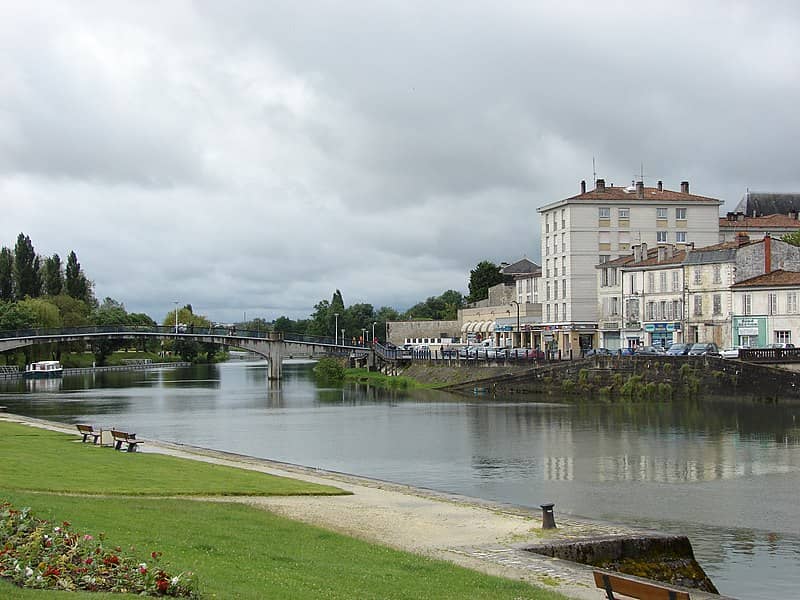
These rivers are all fleuves, or rivers that run into the sea.
● Charente – This river in southwest France has a length of 236 miles (381 kilometres). Charente is a river that originates in the Haute-Vienne department at Rochechouart and runs into the Atlantic Ocean near Rochefort.
● Adour – The Adour is a 193-mile-long (309-kilometer-long) river in southwest France. It runs into the Atlantic Ocean in Bayonne after rising in the central Pyrenees south of the Midi de Bigorre Peak.
● Rhine – Only 188 kilometres of the Rhine in France flows into the North Sea, despite its length of 1325 kilometres. The Rhine river runs along France’s and Germany’s northern borders.
● Somme – This river in northern France is 163 miles (263 kilometres) long. It begins in the hills near Saint-Quentin in the Aisne at Fonsommes and runs all the way to Abbeville. It subsequently flows into an estuary at Saint-Valéry-sur-Somme, which empties into the English Channel.
● Vilaine – Brittany in western France is home to this 139-mile-long (225-kilometer-long) river. It begins in the Mayenne department and ends in Pénestin, Morbihan, in the Atlantic Ocean.
● Aude – Located in the south of France, this river is 139 miles (224 kilometres) long. Flowing via Carcassonne and Narbonne, it originates in the Pyrenees and then travels to the Mediterranean.

Hi, I’m Christine – a full-time traveler and career woman. Although I’m from the Philippines, my location independent career took me to over 40 countries and lived in 4 continents in the last 10 years, including France. A self-proclaimed Francophile, I love everything France.
